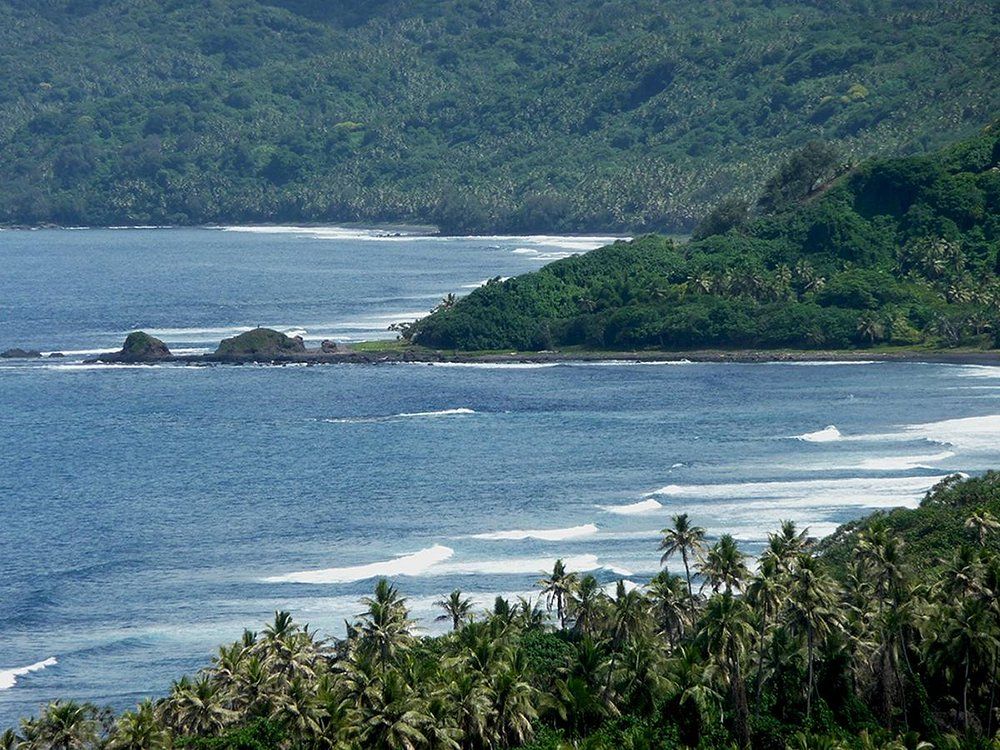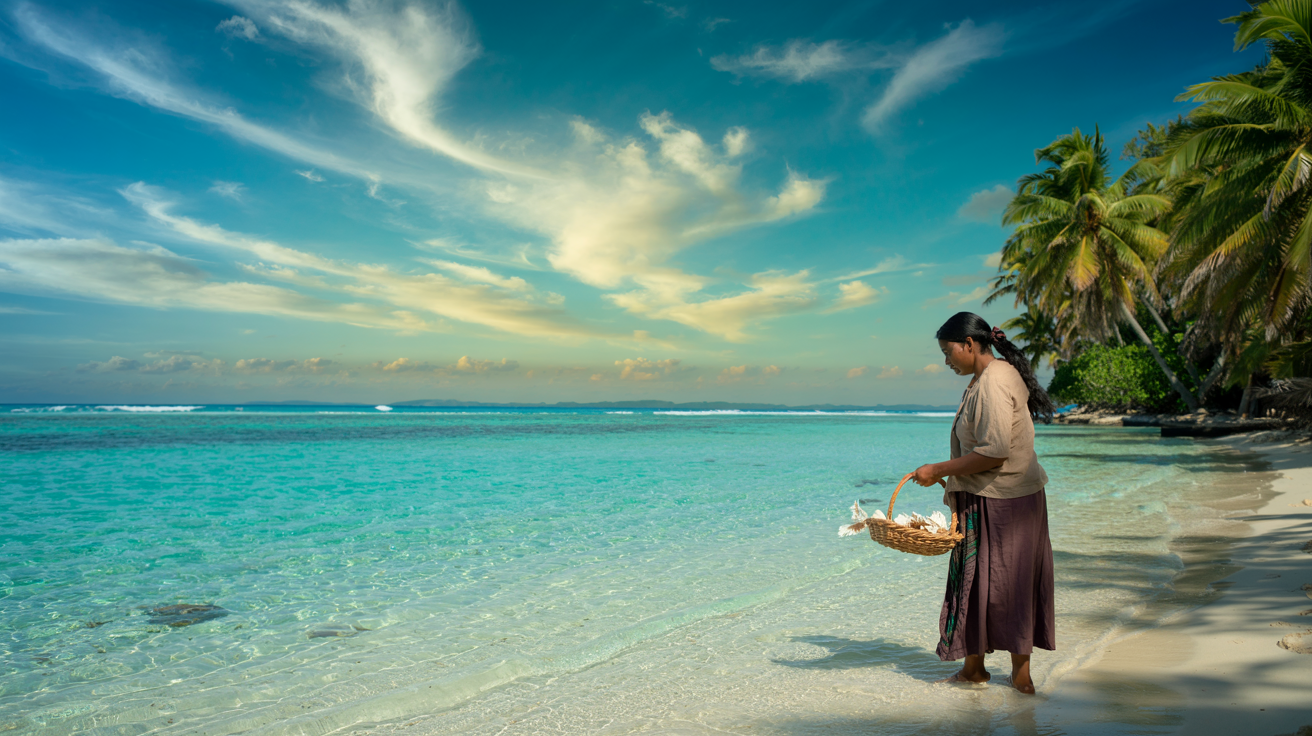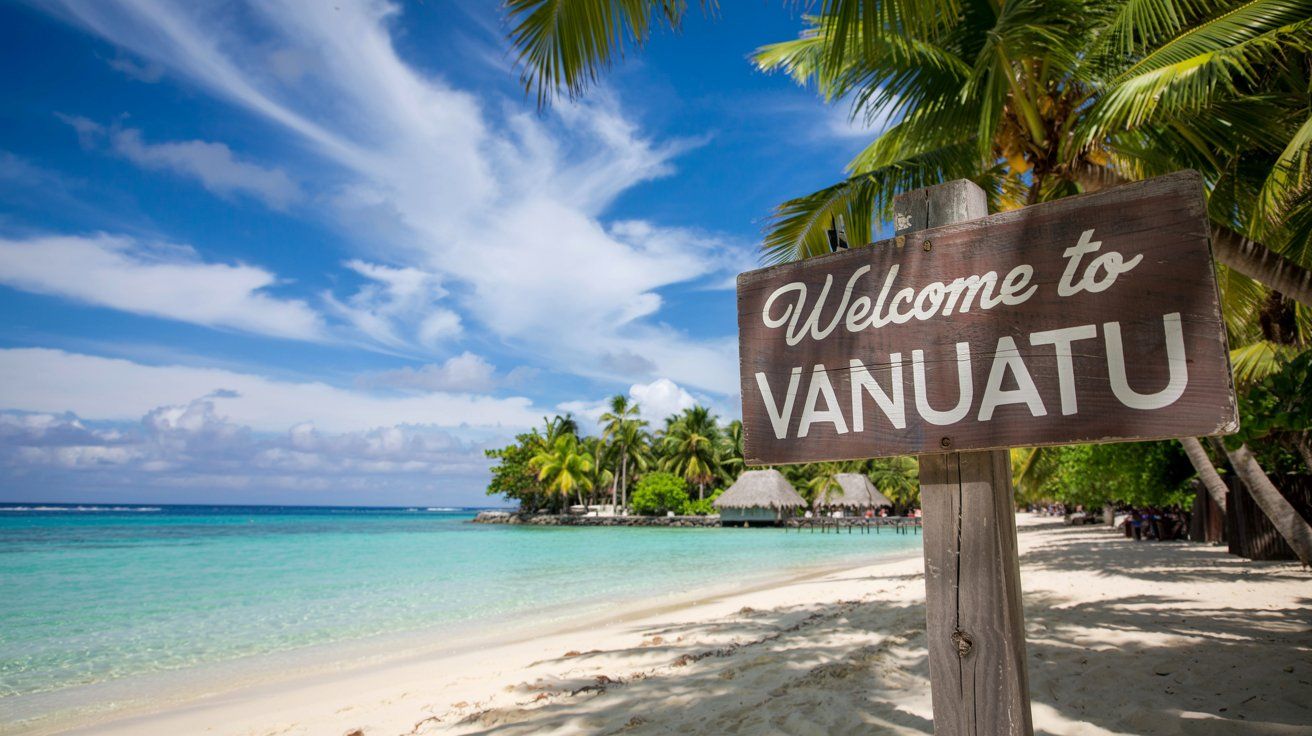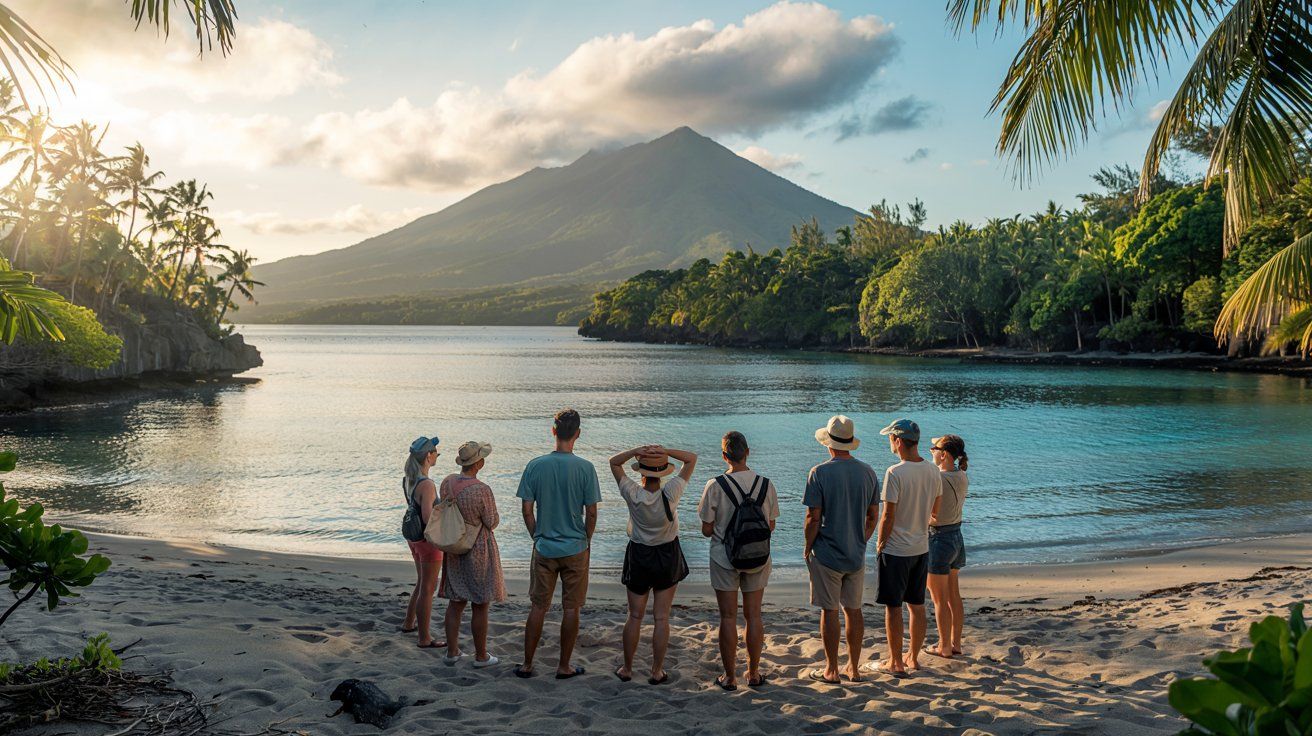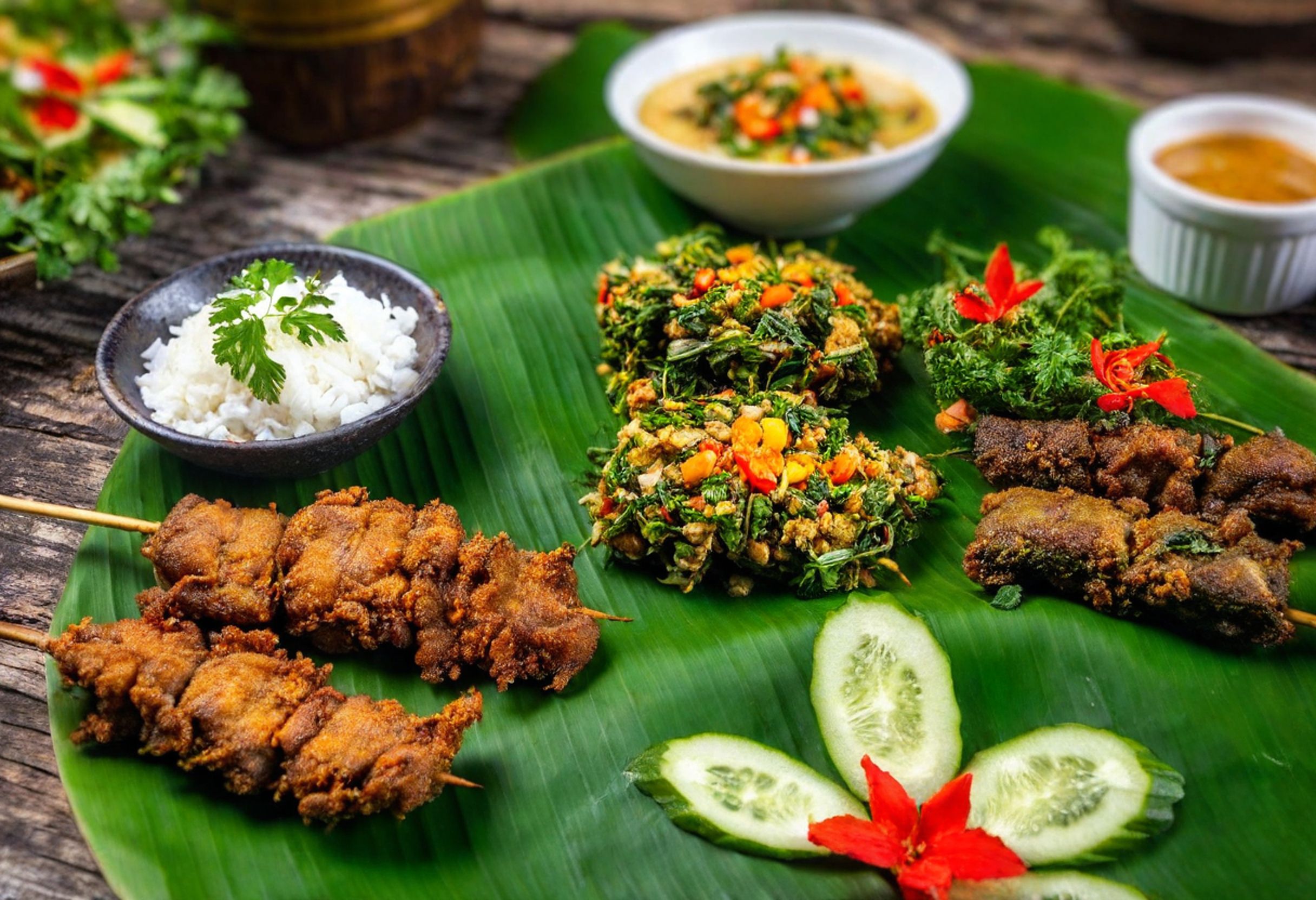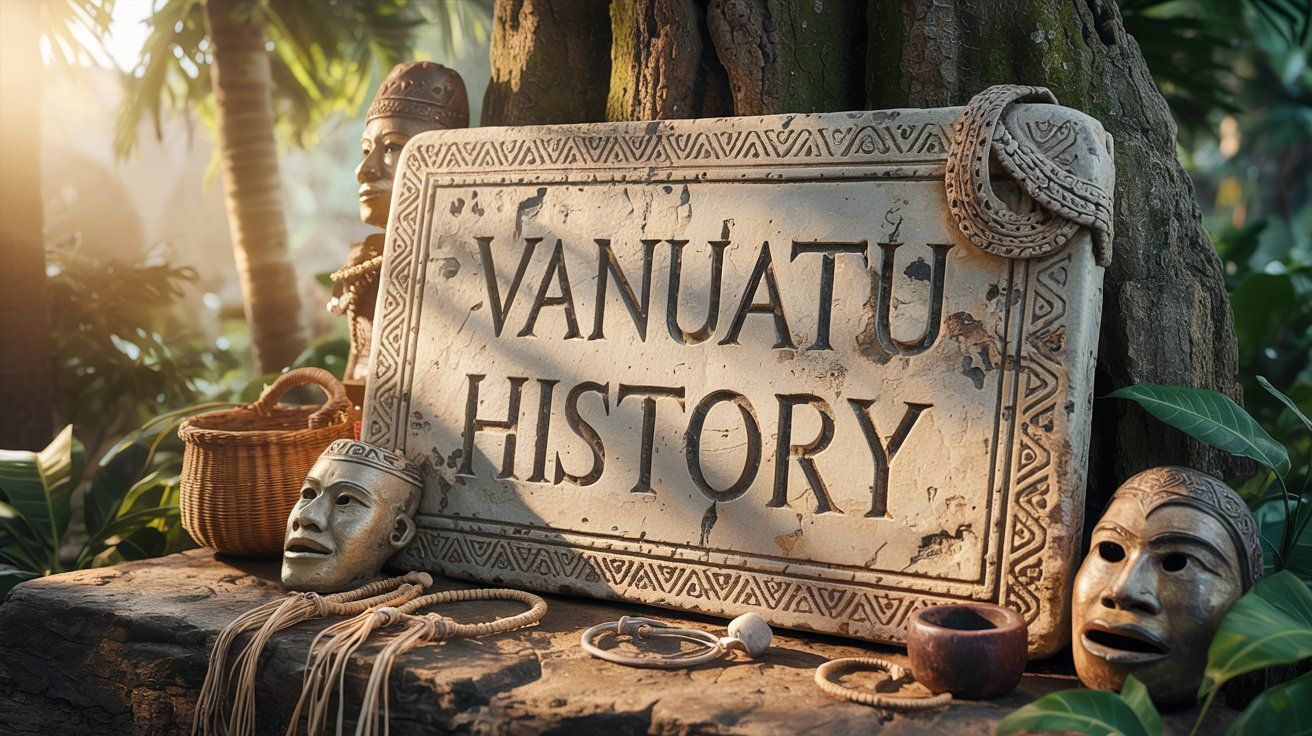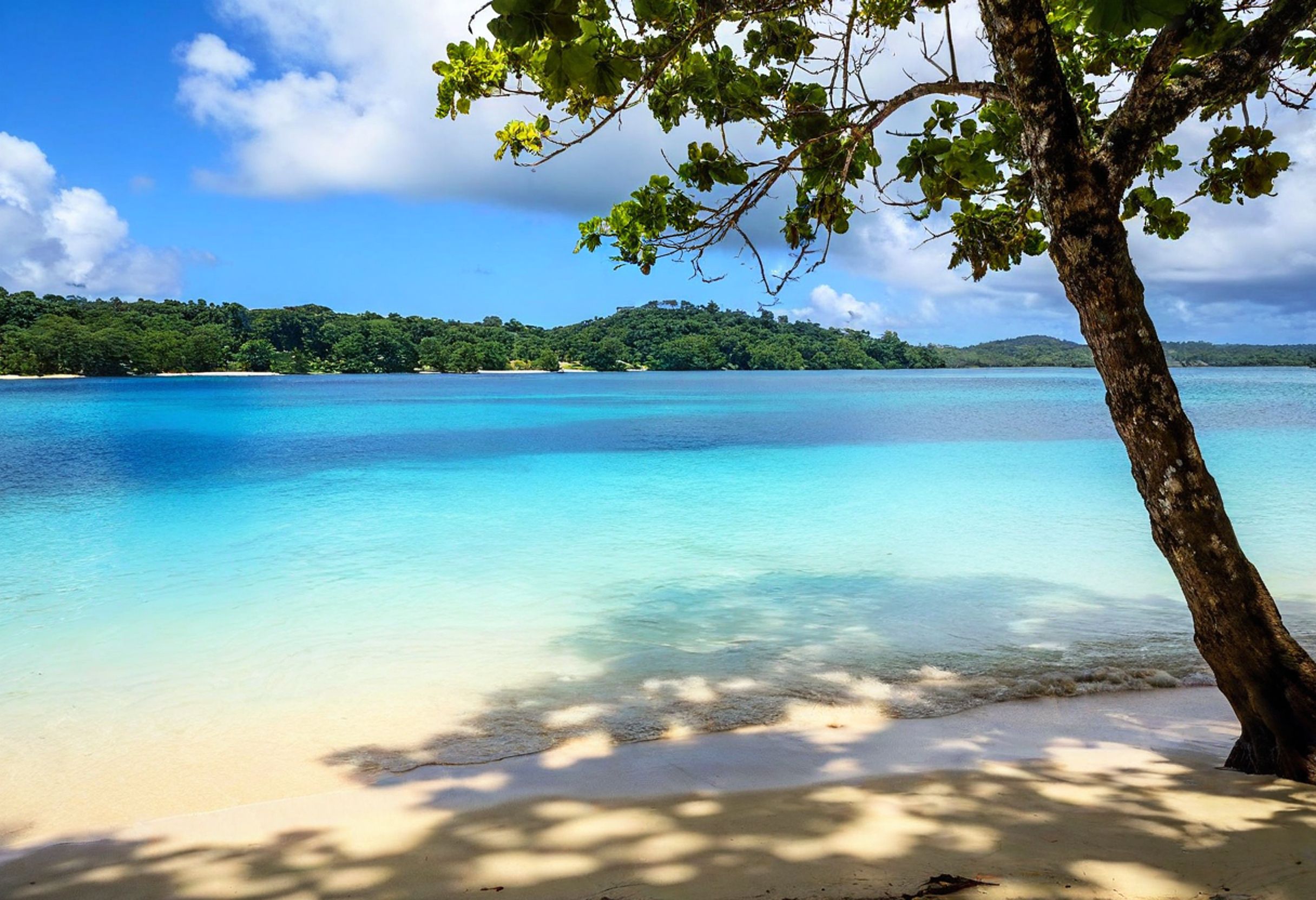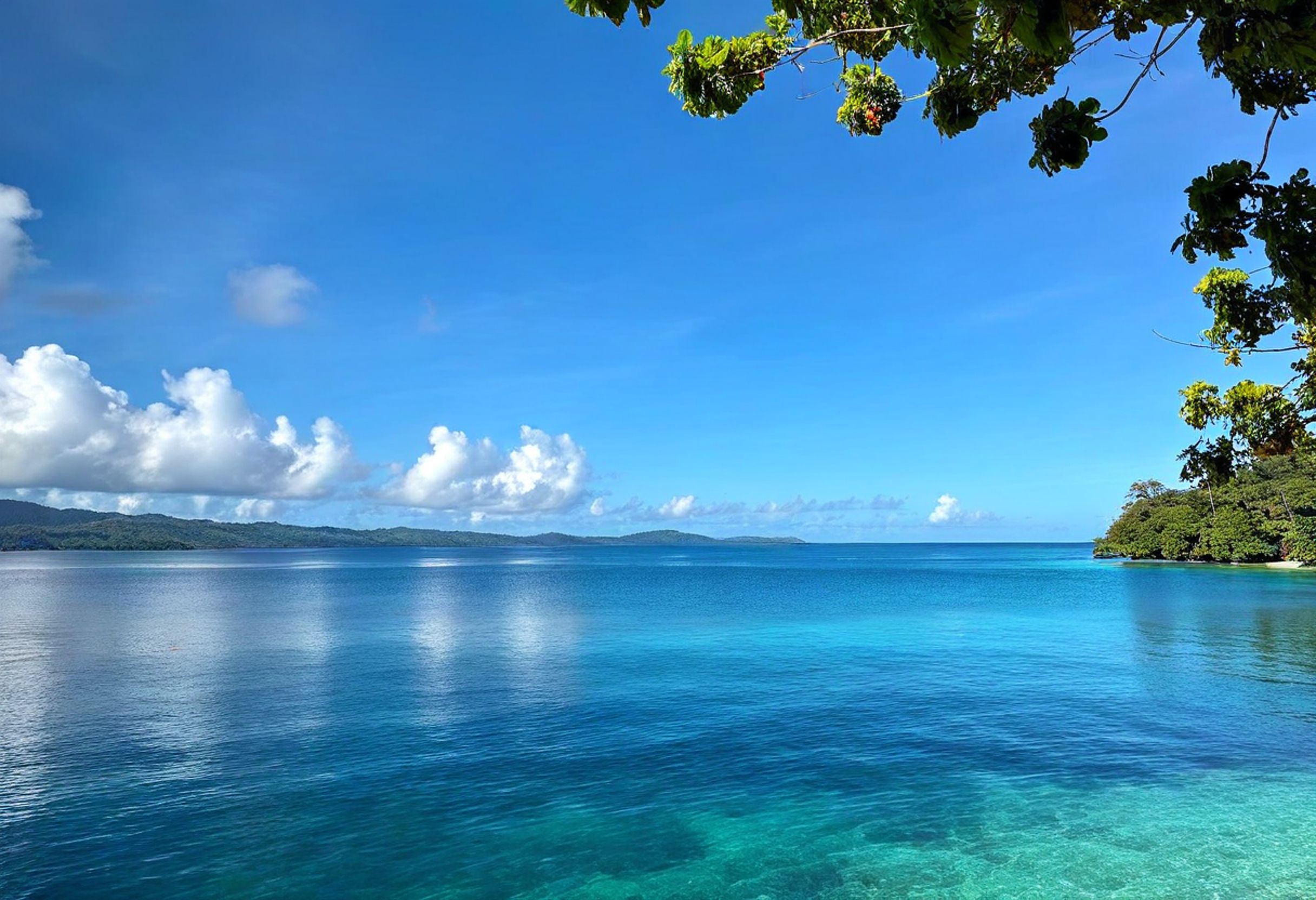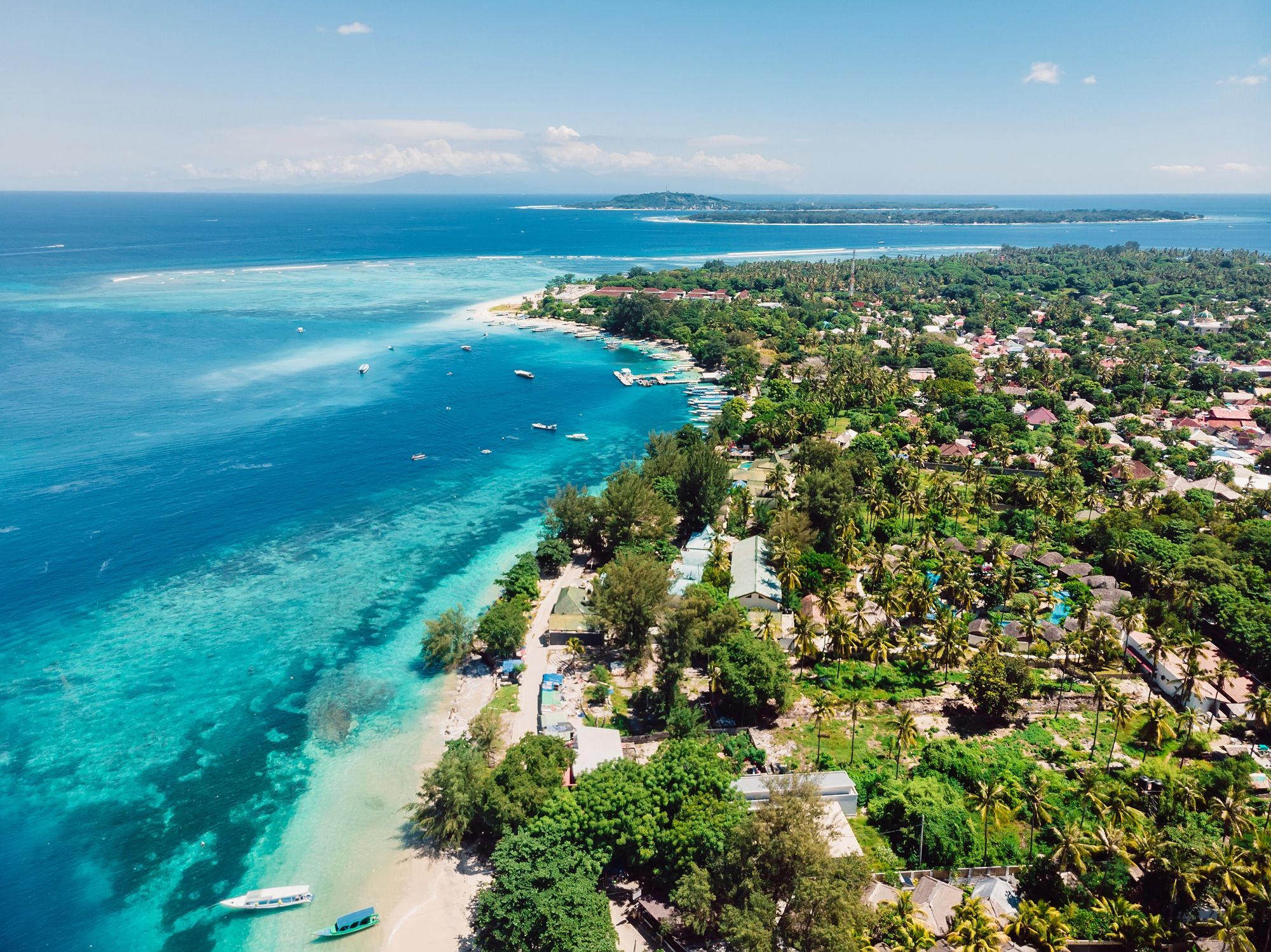Hidden away in Vanuatu’s eastern reaches, Maewo Island stands out as one of the country’s best-kept secrets. The island greets you with black sand beaches, thick jungles, and rugged mountain peaks—pretty dramatic scenery for anyone chasing adventure. Locals call Maewo “Waterfall Island” because it gets the most rain in Vanuatu, which means waterfalls are everywhere, tumbling through its green landscape.
When you land on Maewo, you step into a world where ancient traditions still pulse with life. The island’s secret societies and traditional dances haven’t faded away—they’re alive and well, passed down through generations. Honestly, it feels like you’re getting a real slice of Vanuatu’s heritage, something that’s hard to find on busier islands.
From overwater bungalows to beachfront resorts, find your perfect stay in this island nation of more than 80 islands. Instant booking with best price guarantee!
Browse Accommodations Now
If you’re here for nature, Maewo delivers with empty beaches and wild, untouched beauty. Since tourism is still pretty low-key, you won’t find crowds, but you’ll need to plan ahead. Still, that extra effort pays off when you’re standing under a hidden waterfall or strolling along a beach, leaving the only footprints in the sand.
Why Visit Maewo, Vanuatu?
Maewo Island gives travelers a real Vanuatu vibe, far from the usual tourist scene. It’s a lush island packed with waterfalls, deep-rooted traditions, and welcoming village communities.
Unique Attractions and Experiences
You’ll hear “Waterfall Island” a lot here, and for good reason. All that rain creates incredible waterfalls all over the place. The twin falls near the villages? Seriously impressive and easy to reach.
Village life on Maewo hasn’t changed much. You can join in kastom ceremonies—these aren’t staged for tourists, they’re part of daily life.
Hiking trails crisscross the island, connecting villages and natural wonders. Local guides love showing off hidden spots that most visitors never find. Most trails aren’t too tough and reward you with some jaw-dropping views.
The soil here is crazy fertile, so you’ll see unique plants, many used in traditional medicine. With some curiosity and respect, village elders might share a bit of their knowledge about these plants.
Natural Beauty and Scenery
Maewo’s rainforests blanket the island in green. The constant rain keeps everything lush, and the forests are alive with interesting birds and plants.
Palm-fringed beaches stay empty and clean. Unlike busier islands, you might get an entire stretch of sand all to yourself.
Mountains tower over the villages, giving you dramatic views across the island and out to sea. If you catch the sunset from up high, it’s a scene you won’t forget.
Streams and rivers cut through Maewo, perfect for cooling off after a sweaty hike. The water’s clear and fresh.
Birdwatchers will find plenty to get excited about. Maewo’s isolation has helped keep its wildlife and habitats in good shape.
Authentic Vanuatu Culture
Village communities greet visitors with warmth that feels genuine, not forced.
Kastom—traditional dance, music, and storytelling—still shapes life on Maewo. These traditions carry on much as they always have.
Local food is fresh and simple. Expect fruits, veggies, and seafood, often cooked the old-fashioned way.
Handicrafts here have real character. Woven baskets, carved masks, and shell jewelry aren’t just souvenirs—they’re a way to support local artists.
If you stay in a village, even for a night or two, you’ll see daily life up close in a way day-trippers just can’t.
Getting to Maewo Island
Getting to Maewo takes some planning since it’s less connected than the bigger islands. You can reach it by connecting flights or ferries, but options are limited.
Flights and Transportation Options
Maewo has a single airstrip sitting on a plateau above Naone village. Air Vanuatu runs two flights a week from Espiritu Santo (locals call it Santo), with a stop on Ambae Island. The planes are small, and luggage rules are strict—so pack light.
Flight schedules in Vanuatu change all the time, so check www.airvanuatu.com for the latest before booking anything. If you’ve booked a place to stay on Maewo, ask them to help with flight arrangements—they’re used to it.
Once you land, you’ll need to sort out ground transport to your final stop. Most guesthouses or guides can help set this up if you ask ahead.
Traveling from Port Vila
Getting to Maewo from Port Vila (the capital) means a few travel steps. First, you fly from Port Vila to Santo on Air Vanuatu. These flights run daily and take about an hour.
After Santo, you’ve got two main choices:
- Air connection: Hop on a connecting flight from Santo to Maewo (about 25 minutes)
- Ferry service: Take a ferry from Santo to Maewo (it’s longer but sometimes more reliable when the weather’s rough)
If you’re flying in from overseas—Sydney, Brisbane, wherever—give yourself at least 3 hours between flights. Taxis at Port Vila airport can get you to the domestic terminal for around 1500-2000 vatu.
Weather can throw a wrench in both flights and ferries, so keep your plans flexible.
When to Visit and Climate
Maewo gets more rain than any other Vanuatu island, which keeps everything green and the waterfalls flowing. Knowing the seasons helps you pick the best time to visit.
Best Time of Year
May to September is the dry season, and it’s the most comfortable time to visit. Daytime temps hover between 64°F and 82°F (18°C to 28°C), humidity drops, and there’s less rain. It’s great for hiking, chasing waterfalls, and diving into cultural experiences.
Even in the “dry” months, Maewo still sees regular showers. The upside? Waterfalls stay full and swimming holes are always fresh.
April and October fall in between seasons—fewer tourists, a bit more rain, and sometimes better accommodation deals.
Cyclone Season and Weather Patterns
November through March brings the wet season—higher humidity, heavier rain, and warmer temps around 28°C (82°F). Rainfall really ramps up.
This is also cyclone season. Not every year brings a big storm, but the risk is higher. If you visit then, stay flexible.
Heavy rains can flood roads and make travel tricky. On the bright side, the island’s at its greenest, and waterfalls are at their wildest.
Some guesthouses and tour operators scale back during the wettest months, so check what’s open before you book.
Top Things to Do on Maewo
Maewo’s all about mixing wild nature with real cultural encounters. Waterfalls, traditional villages, and untouched waters set the stage for both adventure and downtime.
Waterfall Adventures
People call Maewo the “Island of Waterfalls” for a reason. The east side gets drenched, and waterfalls are everywhere.
You can’t miss the Asanvari Waterfall—it spills straight into the sea. Local guides lead half-day hikes there, and you’ll want to bring your camera (and maybe a swimsuit).
Smaller falls dot the island, and you can reach many with a guide. Tours usually run 1000-2000 vatu (about $9-18 USD) and include stories about local plants and history.
If you’re up for it, village guides can organize multi-day waterfall treks to more remote spots that almost no tourists see.
Village Tours and Local Life
Village tours let you peek into everyday life on Maewo. Most villages are happy to welcome guests with traditional ceremonies if you arrange ahead.
Elegant resorts, tropical villas, and vacation rentals with immediate confirmation. Experience a culture dating back to 1,300 BC in this breathtaking archipelago!
See Available Properties
The Cultural Village Tour is a chance to learn about local customs, cooking, and crafts. You’ll see nakamal (meeting houses) and get a feel for how people keep their traditions alive.
Villages often put on dance and music performances, and sometimes you’ll get to try your hand at weaving baskets or making laplap (a classic pudding made from root veggies).
The Maewo Moon Cave (sometimes called “the cave of the hole of Tagaro”) is wrapped in legends about the God of the Sea. Guides love sharing these stories—they’ve been passed down forever.
Swimming and Snorkeling
Maewo’s waters are perfect for swimming and snorkeling, and you’ll rarely have to share.
Asanvari Bay is a standout, where the waterfall pours right into the ocean. The mix of fresh and salt water is a cool twist—literally, the water temperature changes as you swim.
For snorkeling, check out the west coast. The reefs are healthy, and you might spot:
- Bright corals
- Tropical reef fish
- The odd sea turtle
- Small reef sharks (don’t worry, they’re harmless)
Black sand beaches line the shore, giving you quiet places to relax after exploring. Water’s clearest in the dry season (May to October).
Most guesthouses can set up boat trips to out-of-the-way snorkeling spots if you ask.
Maewo’s Unique Culture and Traditions
Maewo keeps its traditions alive, weaving the old ways into daily life. The people here have held onto their roots, even as the world changes around them.
Kastom and Village Life
Village life is the heart of Maewo’s culture. Kastom—the customs and ceremonies—shapes everything. Most folks live in small communities, sharing what they have and pitching in together.
The nakamal is where everyone gathers for big decisions. Men meet there in the evenings to drink kava, a ceremonial drink made from plant roots. Kava sessions follow strict traditions, so visitors should be respectful.
Cooking here means earth ovens and banana leaves. Women weave intricate mats, each with designs that tell stories or carry meaning.
Villages break out traditional dances for special occasions. The dances tell tales of island history, spirits, and nature.
If you want to experience these customs, village stays are the way to go—but always check with local leaders first.
Language and Communication
Maewo’s language scene is just as rich as its culture. Vanuatu has over 100 languages, and Maewo has a few unique dialects of its own.
Most people speak their native language plus Bislama, the national creole with a mix of English and Pacific tongues. You’ll hear phrases like:
- “Tangkyu tumas” (Thank you very much)
- “Mi kam from…” (I come from…)
- “Hamas?” (How much?)
English is taught in schools, but not everyone’s fluent. Some older folks know a bit of French, thanks to Vanuatu’s colonial past.
People here communicate with more than words—gestures, expressions, and body language matter. Sometimes, direct eye contact isn’t polite.
Storytelling is still huge. Families gather around fires at night to pass down stories and wisdom.
Where to Stay: Accommodation in Maewo
Maewo has a handful of places to stay, from simple guesthouses to eco-friendly lodges.
Guesthouses and Local Lodges
You’ll find several locally run guesthouses that give you a true taste of Maewo. Mule Ocean View Guest House sits above the water with basic but tidy rooms—great for travelers on a budget.
Samuel Guesthouse is another affordable pick, more central, with owners who often serve up home-cooked meals straight from their garden.
Kerempei Guest House in North Maewo has four rooms and can host up to seven guests. Run by a local family, it gives you a window into daily life. Most guesthouses charge $20-40 USD a night—a steal compared to bigger islands.
Eco-Friendly Options
If you care about your footprint, Maewo has a few eco-lodges. These places use solar power, collect rainwater, and build with local materials.
Eco-lodges usually offer guided nature walks, cultural demos, and sustainable fishing trips. Expect to pay $50-80 USD per night, often including some meals and activities.
The best part? These lodges blend right into the landscape, built in traditional styles that keep things cool and light without much impact on the environment.
Local Food and Drink
Maewo’s food scene is all about fresh, local flavors. Meals mix traditional Melanesian tastes with outside influences. Sharing food is a big part of life here, and it’s one of the best ways to connect with the island and its people.
Traditional Cuisine
The local cuisine on Maewo really shows off the island’s natural abundance and deep-rooted traditions. Meals usually revolve around root vegetables like taro, yam, and manioc—these staples end up in all sorts of dishes. Fresh seafood is everywhere; locals often wrap fish in banana leaves and cook it in earth ovens called “nakamal.” That smoky flavor? Unbeatable.
Lap lap stands out as a traditional dish you’ve got to try. People grate root veggies, mix them with coconut cream, and sometimes add meat, then wrap the whole thing in banana leaves and slow-cook it underground. It takes hours, but the result is totally worth it—rich, smoky, and super satisfying.
Fruits like papaya, mango, and coconut grow all over the place. You’ll notice French influences in the cooking, especially in Port Vila, where fusion dishes pop up next to the more traditional stuff.
Kava Bars and Nakamal Experience
Kava drinking plays a huge role in Maewo’s culture (and honestly, all over Vanuatu). Locals make this traditional drink from crushed kava roots, and it’s known for mild sedative effects that help people relax and connect.
You’ll spot kava at nakamals—the traditional meeting houses that double as social hangouts. Tourists can join, but respecting local customs is key. Kava comes in coconut shells and, yes, you’re supposed to drink it in one go.
The nakamal vibe is something else. Men gather at sunset, drink kava, swap stories, and talk about what’s happening in the community. The mood is calm and thoughtful—nothing like a typical Western bar.
Sometimes, nakamals host storytelling sessions that dive into local myths and history. Those can be genuinely fascinating.
Travel Tips and Practical Information
Getting ready for Maewo takes a bit of extra thought because the island’s pretty remote and facilities are basic. If you come prepared, you’ll have a much smoother, less stressful time exploring this “waterfall island.”
Health and Safety
Bring a simple first aid kit—think bandages, antiseptic, painkillers, and your usual meds. Maewo gets more rain than anywhere else in Vanuatu, so lightweight rain gear and quick-dry clothes are a must. Waterproof bags come in handy for keeping electronics and documents dry during those sudden downpours.
Stick to bottled or purified water. Medical facilities on the island are limited, so travel insurance (with medical evacuation) is a smart move. Don’t forget insect repellent—mosquitoes are most active at dawn and dusk.
Sturdy shoes are essential for hiking to waterfalls; trails get slippery after rain. Always let someone know where you’re going if you plan to head off the beaten path.
Easy booking across stunning accommodations from luxury resorts to eco-friendly retreats. This Y-shaped archipelago offers pristine beaches, active volcanoes, and world-class diving!
Secure Your South Pacific Getaway
Money and Currency
Bring enough cash in Vanuatu Vatu (VUV) when you visit Maewo. There aren’t any ATMs, and credit cards rarely work. Exchange your money at banks in Port Vila or Luganville before you set off.
Small bills are best for everyday purchases. Most places—shops, guesthouses—deal in cash only. Prices can be higher than on the main islands, thanks to transport costs.
A money belt is a handy way to keep your cash safe. It’s smart to budget extra for unexpected expenses like boat rides or hiring a guide. Local markets and shops may close early, so stock up on what you need in the morning.
Day Trips and Nearby Destinations
Maewo makes a great base for exploring nearby islands, each with its own character and highlights. Pentecost Island and Asanvari Bay stand out for their unique experiences and scenery.
Exploring Pentecost Island
Pentecost Island, known for its land diving ritual, sits just a short boat ride away. Day trips from Maewo are possible during the land diving season (April to June), and local guides can help set these up.
The land diving ceremony—Nagol—features men leaping from tall wooden towers with vines tied to their ankles. This ancient tradition actually inspired bungee jumping and celebrates the yam harvest.
Besides the adrenaline rush, Pentecost offers lovely walking trails through traditional villages where you can learn about local customs. The western coast has quiet beaches perfect for a swim or a snorkel.
Small boats run between the islands a few times a week. The trip takes about 1–2 hours each way, depending on the sea, so plan for a full day out.
Visiting Asanvari
Asanvari Bay, on Maewo’s southern tip, might just be one of Vanuatu’s prettiest anchorages. Cruising yachts often stop here, but it’s also a fantastic day trip if you’re staying elsewhere on the island.
The main attraction? A stunning waterfall just a short walk from the beach, forming a natural pool that’s perfect for a refreshing swim. The bay’s clear water is great for snorkeling—lots of coral and colorful fish.
The local village sometimes welcomes visitors with traditional dances, especially when larger groups arrive. Chief Nelson and his family are known for hosting guests and sharing stories about local life.
If you’re coming by land, ask your accommodation to help arrange transport. Many guesthouses organize day trips to Asanvari, often with lunch and a guide included.
Exploring Other Islands in Vanuatu
Maewo’s waterfalls are special, but Vanuatu’s other islands have their own magic. Each one brings something different—landscapes, traditions, and adventures you won’t find anywhere else.
Espiritu Santo and Malakula
Espiritu Santo, the biggest island in Vanuatu, draws visitors for its pristine beaches and top-notch dive sites. Divers flock to Million Dollar Point and the SS President Coolidge wreck. The island’s blue holes are crystal-clear freshwater pools tucked into lush surroundings.
Champagne Beach is famous for its powdery white sand and turquoise water—it even fizzes at low tide, kind of like a natural spa. Hikers find jungle trails leading to hidden waterfalls and remote villages.
Malakula (also spelled Malekula), the second-largest island, is home to some of Vanuatu’s most traditional cultures. With a local guide, you can witness small nambas and big nambas ceremonies. Malakula is perfect for travelers who want an authentic, off-the-beaten-path experience.
Tanna and Yasur Volcano
Tanna Island is all about drama, thanks to Mount Yasur, an active volcano that’s surprisingly easy to visit. Standing at the rim, watching lava light up the night—there’s nothing quite like it.
Beyond the volcano, Tanna has traditional kastom villages where people keep ancient traditions alive. The John Frum cargo cult communities are open to respectful visitors who want to learn about their beliefs.
Port Resolution Bay makes a lovely anchorage for yachts and has a nice beach for a swim. Natural hot springs along the shore are perfect for soaking after a day out.
Efate, Epi, Ambae, and Ambrym
Efate, where Port Vila sits, balances modern comforts with natural beauty. Mele Cascades and the blue lagoons are easy day trips from town. The island’s ring road makes it simple to explore coastal villages and hidden beaches.
Epi Island is a great spot for whale watching (July to October), and you can even swim with dugongs if you’re lucky. It’s quiet, with uncrowded beaches and a laid-back vibe.
Ambae’s covered in lush forest and has crater lakes up in the mountains. Volcanic activity has caused evacuations in the past, so check conditions before you go.
Ambrym stands out for its twin volcanoes and strong traditions. Rom dances, intricate sand drawings, and striking wood carvings are all part of the island’s identity. Black sand beaches ring the coast, giving Ambrym a moody, dramatic look.
Getting Around Maewo and Vanuatu
Getting around Maewo—and the rest of Vanuatu—takes a bit of planning. Transport options are limited, and schedules change often, so flexibility is your friend.
Transport Options on Maewo
Traveling on Maewo is pretty straightforward, though options are few. Walking works well for short trips between villages. Locals mostly use footpaths that crisscross the island.
For longer distances, you’ll need to arrange a ride with someone who has a pickup or a boat. These rides aren’t on a set schedule, but your guesthouse or someone in the village can usually help set something up.
You won’t find taxis on Maewo. If you want to see the waterfalls and other natural spots, hire a local guide—they know the safest paths and can share stories about the island. Guides usually charge reasonable rates.
Car rentals aren’t available here, so bring good walking shoes and a flexible attitude.
Inter-Island Travel
By Air: Air Vanuatu flies direct from Port Vila to Maewo on Wednesdays and Fridays, landing at Laone airfield in the north.
Flight tip: Domestic flights change often, so double-check your booking a few days before you leave.
If you want to avoid backtracking, you could fly into Laone (north Maewo) and out from Sara airfield on northern Pentecost.
By Sea: Cargo boats and ferries link Maewo with Santo and nearby islands. These boats are cheaper than flights, but the schedules? Not reliable at all—they might change with little notice.
Add extra days to your plans in case of delays. Weather and operational hiccups are common. Boats from Santo are usually more affordable than flying from Port Vila.
Responsible and Sustainable Tourism
Responsible travel keeps Maewo beautiful and supports the locals. The island’s tourism is all about respecting culture and protecting the environment.
Supporting Local Communities
Stay in locally-owned guesthouses rather than big international hotels. These places are simple but comfortable, and your money directly helps island families.
Consider homestays—living with a local family is a great way to learn about daily life. Prices usually range from $20–40 USD per night, meals included.
Buy handicrafts straight from the makers. Maewo is known for woven baskets, carvings, and textiles. These souvenirs are meaningful and support local artisans.
Hire local guides for your outings. They share real knowledge about Maewo’s customs and hidden gems, plus they earn a fair wage.
Eco-Friendly Activities
Maewo’s nature is delicate, so treat it with care. Stick to marked trails when hiking to waterfalls or swimming holes to help prevent erosion.
Bring a reusable water bottle and a filter instead of buying plastic. Water is plentiful on Maewo (it’s not called “the water island” for nothing), and most guesthouses offer safe drinking water.
Eco-friendly things to do:
- Birdwatching in protected forests
- Snorkeling (use reef-safe sunscreen)
- Visiting organic farms that use traditional methods
If you’re snorkeling, don’t touch or take coral. The marine life around Maewo is crucial for both the ecosystem and local fishermen.
Useful Resources and Contacts
Here are some key contacts and resources to help you get around Maewo. These folks can help with info, bookings, and emergencies.
Tourist Information Centers
The Vanuatu Tourism Office provides information about Maewo and the other islands. Their main office is in Port Vila (Efate), and there’s a branch in Luganville (Santo). They offer maps, accommodation info, and tour contacts for Maewo.
Vanuatu Tourism Office Contacts:
- Port Vila Office: (+678) 22813
- Email: [email protected]
- Website: www.vanuatu.travel
On Maewo, the Island Council runs a small info point at Narovorovo village. You can also arrange local guides through your guesthouse or by talking to the village chief.
Most guesthouses double as informal info centers. Hosts are happy to help arrange waterfall tours, cultural experiences, and transport.
Emergency Services and Consulates
Maewo doesn’t have many emergency facilities. You’ll find a small health clinic in Nasawa, right in central Maewo, but it only stocks basic medical supplies. If something serious happens, you’ll need to get evacuated to Santo or Port Vila.
Emergency Contacts:
- National Emergency: 112
- Vanuatu Mobile Force: (+678) 22222
- Maritime Rescue: (+678) 23000
Australia and New Zealand both have consular services in Port Vila, and they can help their citizens if things go wrong.
Find available hotels and vacation homes instantly. No fees, best rates guaranteed!
Check Availability Now
Consular Services:
- Australian High Commission: (+678) 22777
- New Zealand High Commission: (+678) 22933
Phone connections on Maewo can be pretty unreliable. You might want to rent a satellite phone in Port Vila before heading out. If you’re planning to explore remote spots, make sure you let your accommodation know where you’re going and when you plan to return.

